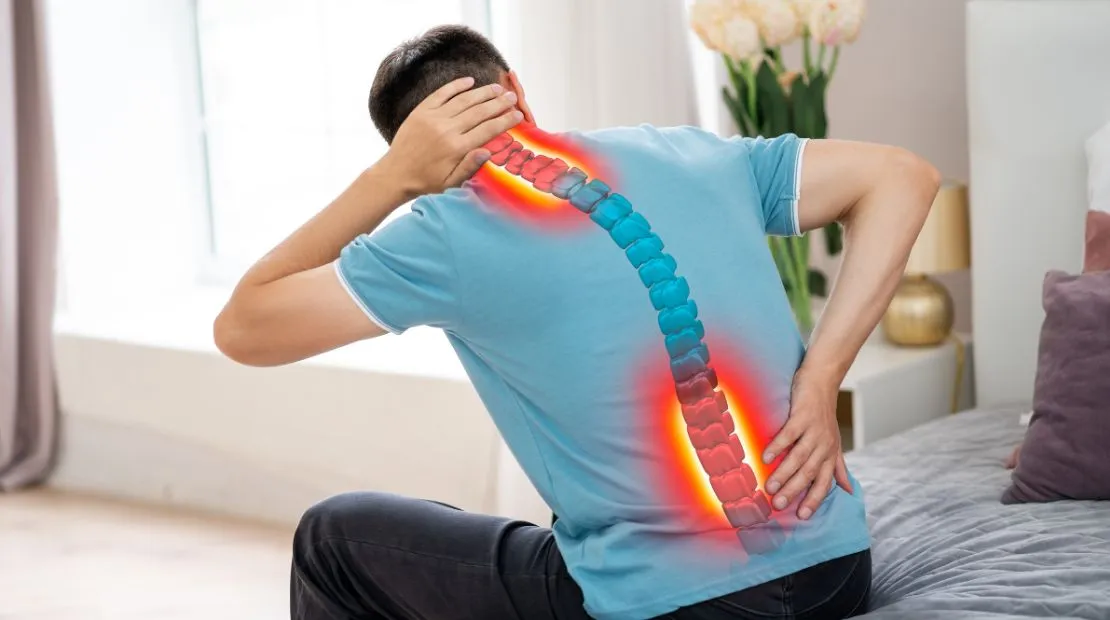Your bone and joint health is fundamental to a healthy and happy life, as it helps you stay agile,
active and independent. These essential components of our musculoskeletal system provide structure,
support, movement, and protection for vital organs.
I wonder why people are so careless when ensuring their well-being is so easy. Good nutrition,
strengthening exercises, and a disciplined lifestyle can go a long way.
The foundation for strong bones is laid during childhood. Calcium and vitamin D from dairy, leafy
greens, fish, and fortified cereals, along with protein and micronutrients like magnesium and
vitamin K,
are vital.
Exercise plays a critical role in maintaining bone density and flexibility. Weight-bearing
exercises
like walking, jogging, and resistance training help bones grow stronger. Yoga and swimming
improve
flexibility with minimal joint stress.
I believe that everyone, at every phase of life, should strive to maintain mobility. Even as you
age,
when your knee or hip joints may require intervention, your muscle strength helps you recover
faster.
Mobility also helps maintain a healthy weight, which reduces pressure on joints. Excess body
weight
increases the risk of osteoarthritis and joint wear over time.
Smoking and heavy alcohol consumption reduce bone health. Smoking affects calcium absorption,
and
alcohol disrupts nutrient balance. Quit smoking and moderate alcohol to support long-term joint
health.
Despite the strong sun in India, vitamin D deficiency is common. Regular checks for bone density
and
vitamin levels are essential.
Preventive care today can help you enjoy mobility, strength, and independence throughout life.
Osteoporosis in Men
Osteoporosis is a condition that causes bones to become weak and break more easily than normal
bones.
It is called a “silent killer” because it progresses without symptoms until a fracture occurs.
While
often viewed as a women’s disease, osteoporosis in men—especially above the age of 70—has become
an
important public health concern. Lifetime fracture risk in men ranges from 13% to 25%.
Bone Across the Lifespan
Bone mass peaks during the third decade of life, after which it declines. Past 60 years, reduced
calcium
absorption and excessive bone loss make bones fragile. Hip fractures are especially dangerous in
men as
they often lead to more complications than in women.
Risk Factors
Non-modifiable
- Age: Higher risk after mid-sixties
- Reduced sex hormones: Low testosterone
- Ethnicity: White and Asian men at higher risk
- Body build: Tall, thin elderly men more susceptible
- Genetics: Family history of osteoporosis
- Fracture history: Previous low-impact fractures after age 50
Modifiable
- Inactivity
- Smoking
- Excessive alcohol use
- Lack of regular exercise
Related Health Conditions
- Chronic kidney, lung, stomach, intestinal, or thyroid diseases
- Long-term steroid use
- Low testosterone
- Androgen deprivation therapy for prostate cancer
Diagnosis
Osteoporosis can be treated if detected early. The gold standard is a DXA Scan, which measures
bone
density at the hip and spine with minimal radiation. The FRAX tool (developed by WHO) estimates
the
10-year fracture probability using risk factors like smoking, alcohol, age, and weight.
Prevention
- Avoid smoking and excessive alcohol
- Ensure adequate daily calcium and Vitamin D intake (consult your doctor)
- Engage in low-impact, weight-bearing exercises like walking or gentle resistance training
- Practice flexibility and balance exercises such as yoga
- Treat underlying medical conditions promptly
Treatment
Osteoporosis treatments include bisphosphonates, denosumab, and teriparatide, which either reduce
calcium loss or promote calcium deposition in bones. Therapy is long-term, supported by
physiotherapy,
exercise, and nutritional support. Patient counselling is essential since recovery has no
immediate
visible signs.


